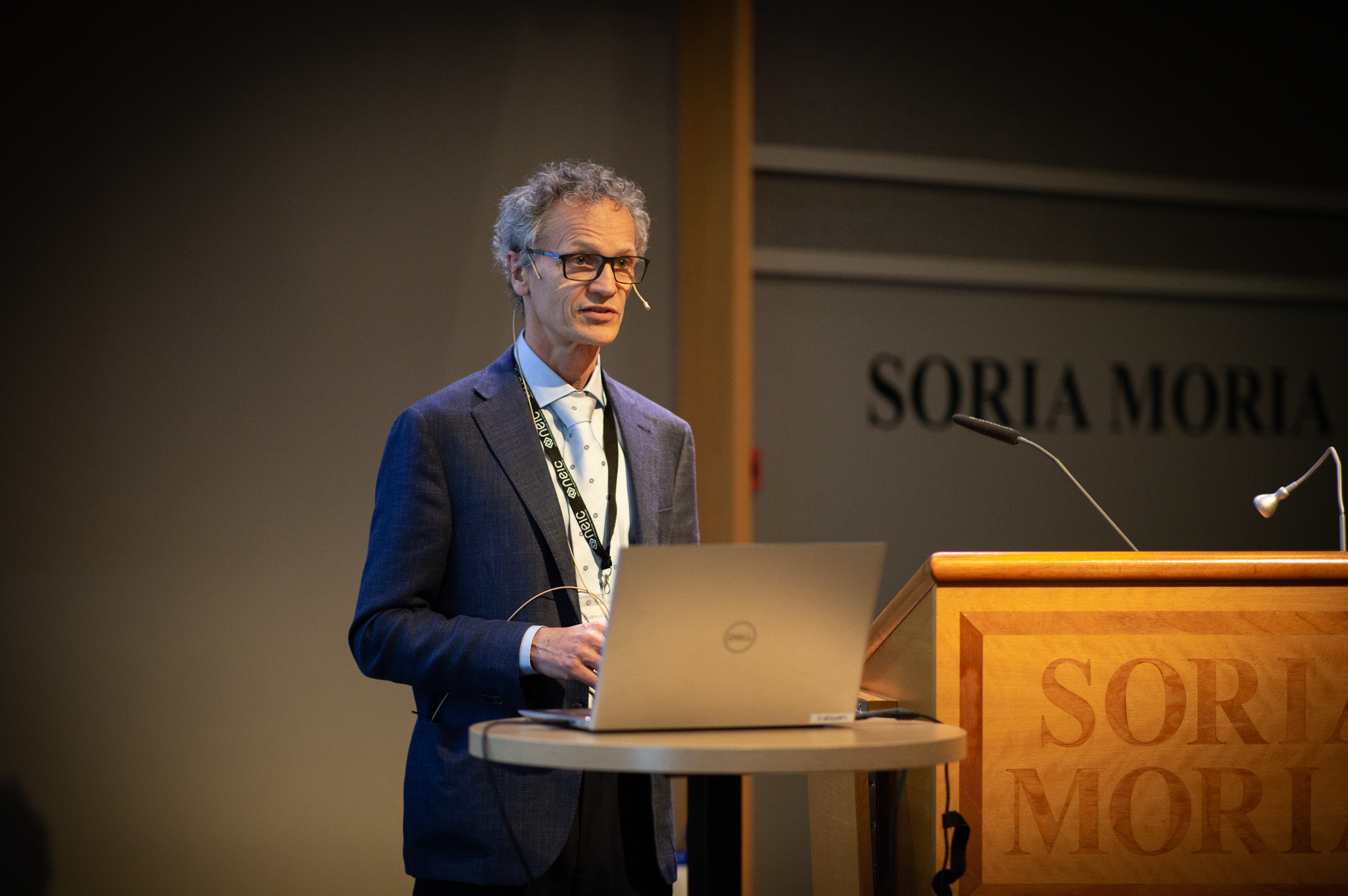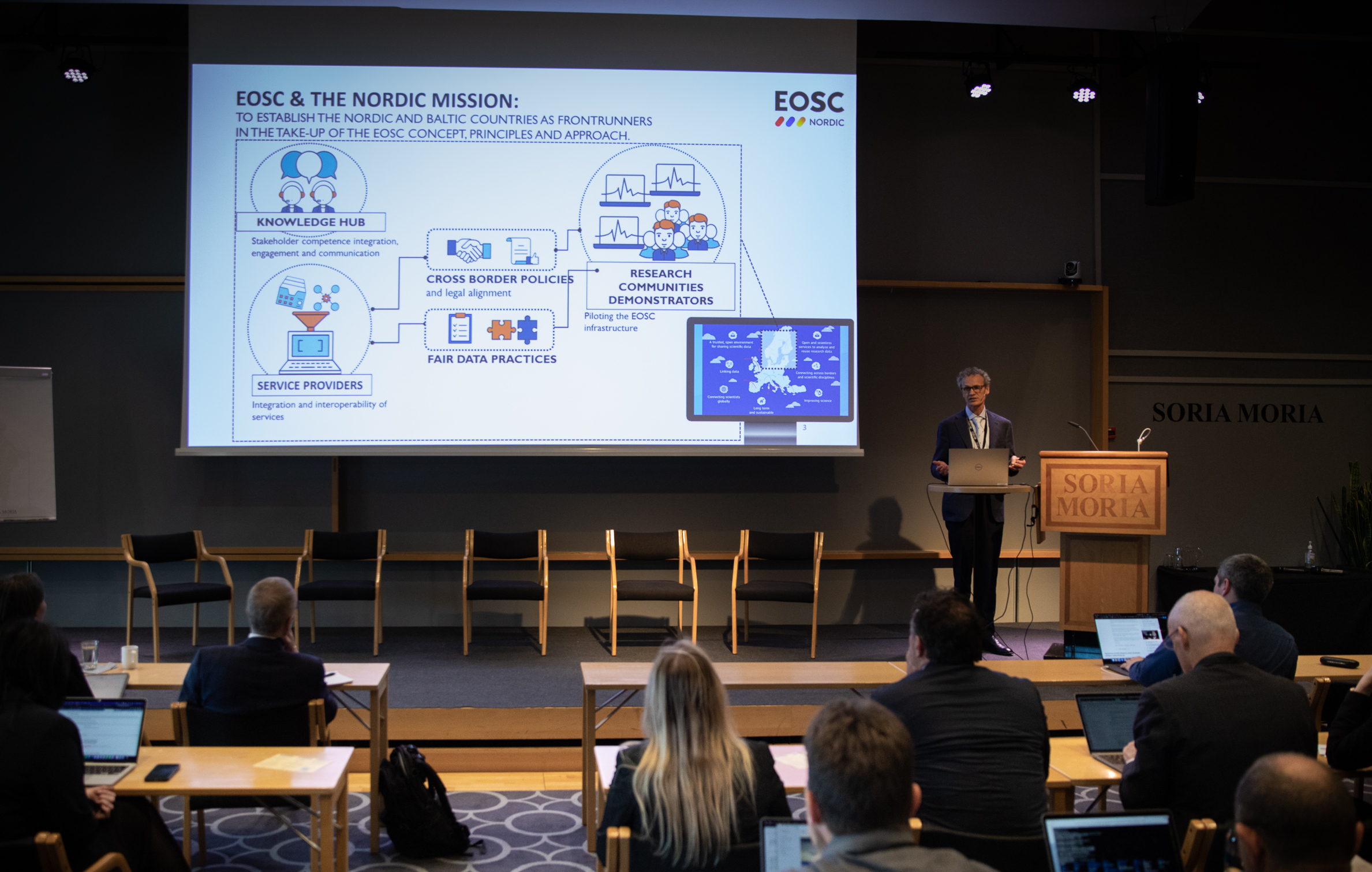TEN SUCCESS STORIES FROM TEN YEARS OF SUCCESS: Nordic e-Infrastructure Collaboration throughout the years
Year 2022 marks the 10-year anniversary for NeIC. To celebrate this milestone, we will publish ten stories that showcase how NeIC has contributed to developing best-in-class e-infrastructure services beyond national capabilities and enhanced the productivity of research in the Nordic Region.
The Nordic e-Infrastructure Collaboration, also known as NeIC, was established in 2012. NeIC facilitates collaboration on digital infrastructure within the Nordic countries and Estonia by providing experts coming from different countries, organisations and fields opportunities to work together. This Nordic collaboration on digital infrastructure had started already before NeIC was established. Since 2003, the Nordic countries have been collaborating on the Worldwide Large Hadron Collider Computing Grid (WLCG) at CERN, providing research computing and storage for high-energy physicists worldwide. The successful collaboration that started with the services offered by the Nordic Data Grid Facility (NDGF) was after some years expanded into NeIC, which was tasked to run the Nordic WLCG Tier-1 facility, also known as NT1. The initiation of NeIC made it possible to facilitate collaborations to benefit other science areas.
This fourth story will explain how, when, and why NeIC was established, how it has expanded, and where it could be going. In this story, we get a chance to look at NeIC through the eyes of someone who knows more about the background and the current state of the collaboration than anyone else - namely NeIC’s director, Gudmund Høst.
Where it all began
It was the early 2000’s. Gudmund Høst, who was working as a Senior advisor at the Research Council of Norway, was tasked to participate in a steering group for a pilot project called NDGF (Nordic Data Grid Facility) to represent Norway. Around the same time, he was also participating as a Norwegian delegate to the e-Infrastructure Reflection Group (e-IRG). Høst says that it was the informal networking between representatives from different Nordic countries in the context of e-IRG meetings that led to discussions about how they could come together and discuss, for example, strategies related to e-infrastructure.
Those discussions then led to applications for a NORIA-net project under NordForsk called the Nordic eScience Initiative (eNORIA). NORIA-net was NordForsk’s instrument to inspire Nordic collaboration in various areas but also between the Nordic funding agencies – the facilitators of research. The Nordic eScience Initiative resulted in the Nordic eScience Action Plan, which was published in 2008. The eScience Action Plan proposed to boost the collaboration on e-science and e-infrastructure to enable Nordic research excellence across the full spectrum of scientific domains to prepare for the globalised future. The document was received and praised by both NordForsk and the Nordic Council of Ministers.
In 2010, NDGF was evaluated by an external expert committee solicited by the Joint Committee of the Nordic Natural Science Research Councils (NOS-N). The evaluation report recommended setting up a new NDGF as a legal entity owned by the national e-infrastructure providers and with goals resonating with the Nordic eScience Action Plan.
– The funding agencies went along with the recommendations, but found the national processes that would be required to set up a legal entity to be too complicated and bureaucratically heavy. Eventually, NordForsk was presented with the idea of them hosting such an organisation, and they welcomed the initiative. They have now been hosting NeIC successfully for 10 years, Høst describes.
In 2012, Høst himself moved from the Research Council of Norway to NordForsk and was appointed the director of NeIC.

Gudmund Høst at the NeIC 2022 Conference on 30 May 2022. Foto Ingar Sørensen.
Implementing the policy-makers’ visions
When NeIC was established in 2012, the common understanding between the Nordic funding agencies was that the aim was to expand the collaboration on digital infrastructure beyond what was done through the NDGF project. Høst confirms that this task has been taken very seriously.
– Since 2012, we have expanded into a new mode of facilitating collaboration projects: to develop new tools of common interest amongst the stakeholders and national providers. We have widened the set of activities within e-infrastructure collaboration. NeIC’s projects and activities have continued to benefit Nordic researchers in high-energy physics, but now they also benefit several other fields of research, he says.
Høst adds that this expansion has come hand-in-hand with the NordForsk strategy and the Nordic strategies in general. The Nordic Council of Ministers established e-science as a high-priority initiative already in 2006, and a Nordic eScience strategy was proposed in 2007. The Nordic research funding agencies proposed a Nordic eScience research programme, which ran from 2011 to 2019 as one of the major programmes of NordForsk’s portfolio. The Nordic Council of Ministers confirmed their interest in this area by soliciting a Nordic eScience Action Plan 2.0, published in 2015. They requested NordForsk to implement the plan, and from 2015, NeIC received co-funding from NordForsk for implementing relevant parts of the action plan.
– The NordForsk funding and them hosting NeIC has been crucial in enabling the wide range of e-infrastructure collaboration we see today, Høst states.
Crossing the borders within and beyond the Nordics
NeIC’s highest governing body, the board, is appointed by NordForsk. The board consists of one representative from each member country. Today, it is not only the Nordic countries – Denmark, Finland, Iceland, Norway and Sweden – that are represented: Estonia has been a member country in NeIC for over two years.
Høst says NeIC and its board have always been open to collaborating with people and organisations outside of the Nordic Region.
– Estonia showed interest in Nordic collaboration some years before they became a formal partner in NeIC. They initiated the dialogue with us and, after discussions, started to participate in NeIC’s projects on their own funding. After a few years, it was obvious that they had a lot to bring to the table, and a lot to gain from working more closely with the Nordics, Høst says.
Today, Estonia is one of NeIC’s member countries on equal footing as the others. Høst adds that NeIC has a membership contribution model that adjusts to Estonia not being a member of NordForsk but a member in NeIC. When Estonia expressed that they are interested in joining NeIC, NeIC’s board changed the mandate into allowing for observes in the board, before appointing the country a full member. Becoming a temporary observer in NeIC’s board is still possible on the grounds that there either is or could be mutual interest to become a full member. In addition to this, NeIC has in the past collaborated with organisations from outside of the Nordics and Estonia, such as Germany.
In addition to having members and partners outside the Nordic Region, in 2019 NeIC stepped into a new role as a coordinator of an EU-funded project, the EOSC-Nordic. This role, according to Høst, is the outcome of the board being open to new opportunities – and the national providers being quick to invite others to discuss and act on this particular opportunity. The opportunity was to initiate regional projects within the open science realm that could later either inspire or be implemented in the European-wide Open Science Cloud.
– There was an idea from someone in our network that we could, and should, launch a Nordic Open Science Cloud. This idea grew into a proposal of a project called EOSC-Nordic, European Open Science Cloud-Nordic. Our stakeholders were hoping that we do this, and I think that shows the role of NeIC: to be alert, aware and open to new types of collaboration, and put the idea into operation when there is enough interest amongst our partners and stakeholders, Høst states.
EOSC-Nordic has been running since 2019 and is coming to its end later this year. It has been very successful, contains a large number of activities and is beneficial for Europe. Høst sees that it has also been hugely beneficial for the Nordics and Baltics to come together both in areas we worked in before as well as new ones, such as the policy discussions that have been facilitated by EOSC-Nordic. They have been broader and engaged more and different stakeholders than the previous ones facilitated by NeIC.

Høst presenting at the EOSC in the Nordics: from policy to practice workshop during the NeIC 2022 Conference. Foto Ingar Sørensen.
What’s next for NeIC?
The successful EOSC-Nordic project has also opened NeIC a new door towards Europe. Could NeIC be involved in European projects also in the future? Høst confirms that there are now several other European initiatives of interest to NeIC’s partners where NeIC could perhaps do some facilitating or coordinating.
– That would definitely be an interesting direction for the future of NeIC. Whether it is the ideal future, I don’t know yet. However, I am convinced that there are vast opportunities for creating Nordic benefits through collaborating more in this space between national and European initiatives. How we can work to the benefit of our partners in the European context is one of the most interesting and challenging areas for the future, he says.
Høst explains that moving into this direction may also be important for NeIC from sustainability’s point of view. It has been seen that the Nordic funding is limited, and the national research funding is under pressure in several countries. To find a way to help our members to be successful in this space between national and European initiatives is important for the future of NeIC, for the national organisations and the entire Nordic Region.
Høst thinks it is key for the future of Nordic e-Infrastructure Collaboration to find the member countries’ converged strategies and help them participate in the European context on those terms. Another interesting challenge for NeIC for the future is to act as an implementer of digitalisation initiatives for the Nordic Council of Ministers.
– This is something that is already happening in the context of an initiative called Nordic Microdata Database. Here, we are helping the Nordic Council of Ministers to implement one of the recommended steps towards an integrated and effective Nordic ecosystem for innovation and green growth. “The NeIC way” may also be a tool of interest in other areas of digitalisation, such as infrastructure for health research, Høst says.
